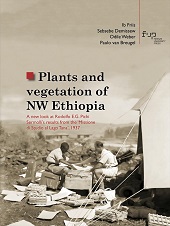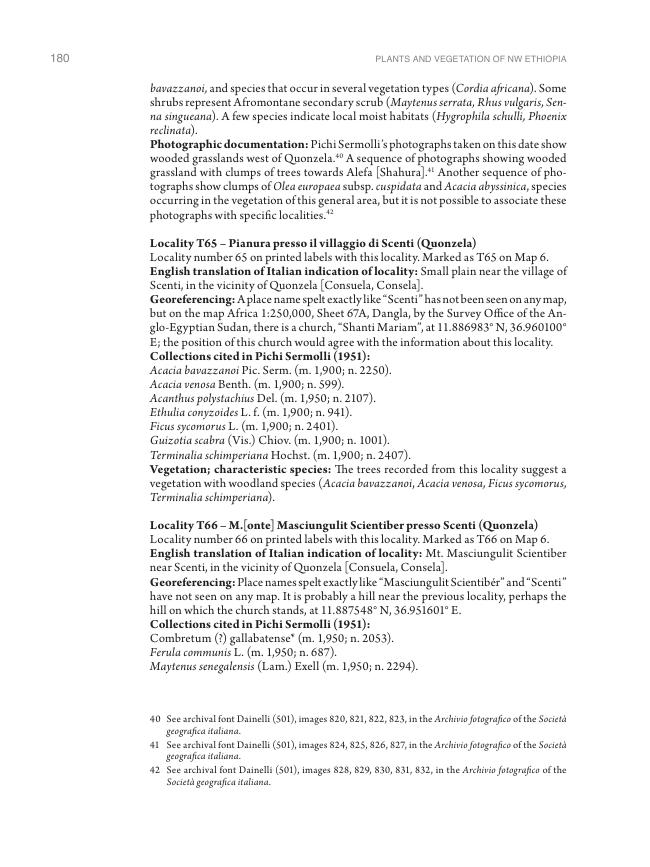2022 - Firenze University Press
E-book
Digital Version
Plants and vegetation of NW Ethiopia : a new look at Rodolfo E.G. Pichi Sermolli's results from the "Missione di Studio al Lago Tana," 1937
350 p. : ill. (some color)
- Includes bibliographical references (p. 305-309) and indexes.
- Pichi Sermolli's work with his more than 2750 collections of plants from nearly 150 localities on the Lake Tana expedition in Ethiopia in 1937 was interrupted by World War II, but completed in 1947 at the Royal Botanic Gardens, Kew, and the British Museum (Natural History), UK. It resulted in preliminary accounts of the vegetation published 1938-40 and a taxonomically arranged account in 1951, all in Italian. Pichi Sermolli's observations are difficult to locate due to the imperfect maps of the time, but in this book the authors have reconstructed the sequence of the collections, georeferenced the localities, and updated the identifications of the species. By reconstructing Pichi Sermolli's observations, it is possible to draw conclusions about the vegetation and compare with a recent model of the vegetation of Ethiopia. According to this, the vegetation of the Lake Tana Basin was a complex mosaic of woodland, scrub, forest, farmland and lake shore vegetation now difficult to interpret in detail.
- Pichi Sermolli's study of the vegetation in the Semien Mountains demonstrated for the first time the zonation of Ericaceous woodland and Afroalpine vegetation, within which he distinguished Carex monostachya bogs, Afroalpine grasslands with Lobelia rhynchopetalum, and stony and rocky Afroalpine vegetation. This book interprets Pichi Sermolli's observations in English and compares them with modern knowledge of the region, partly obtained by the present authors' own field work. It demonstrates how Pichi Sermolli's studies form a valuable contribution to the understanding of the Ethiopian flora and vegetation. Ib Friis, Natural History Museum of Denmark, University of Copenhagen, Denmark Sebsebe Demissew, National Herbarium of Ethiopia, University of Addis Ababa, Ethiopia Odile Weber, Natural History Museum of Luxembourg, Luxembourg Paulo van Breugel, HAS University of Applied Sciences‘s-Hertogenbosch, the Netherlands. [Publisher's text]
-
Information
ISBN: 9788855186346
SERIES
DISCIPLINES



